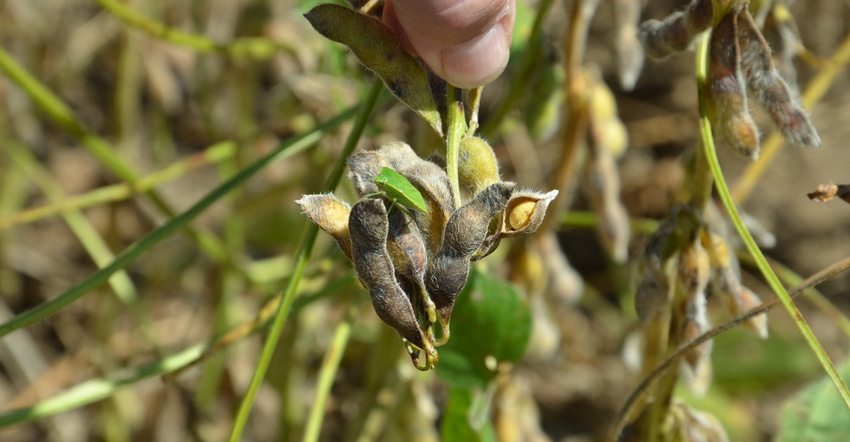May 14, 2020

Healthy crops are more resilient against insects, making plant health an effective pest defense. Ways to improve crop health include installing drainage, minimizing surface crusting and soil compaction, providing proper soil pH and fertility, controlling weeds and diseases, and paying attention to planter depth, speed and seed-slot closure to promote consistent crop emergence. Also, use multiple cultural methods for long-term sustainable control, such as crop rotation and cover crops.
Insecticidal seed treatments are meant to suppress occasional pests, but often have negative effects on beneficial insects and organisms. Ensure they are necessary, especially in soybeans. Use the lowest rate to suppress anticipated insect pests and minimize effects on beneficial organisms.
For example, insecticidal seed treatments don’t control slugs. However, beneficial insects feeding on slugs can be inadvertently killed, leading to a slug population with few to no predators. Lightning bug larvae eat slugs. How many lightning bugs do you see in your fields on a warm summer night? Do you see spiderwebs in fields after a heavy dew?
Properly identify all pest species. Scouting — early and often — is key to any integrated pest management (IPM) program. If using cover crops, look out for black cutworms, armyworms, stinkbugs and slugs. But cover crops also promote predators, parasites and pollinators. Is the insect you find friend or foe?
Use scouting of beneficial and problem insects to determine if economic thresholds have been met to warrant treatment. Crops can sustain visible damage without yield loss. There is often a lag before beneficial organisms can catch up with a pest outbreak. If the beneficial insects can control the pest outbreak, pest effects will only last for a short time. If insecticides are sprayed, the damage to beneficial organisms can affect populations for months or years.
Recognize beneficial insects
Properly identify and consider all beneficial organisms. This will give you an idea of your natural defenses against pest outbreaks. Encourage beneficial species such as ground beetles, minute pirate bugs and spiders with a soil health management system including conservation practices such as no-till and strip-till, cover crops and buffers.
During herbicide applications to terminate cover crops or weeds, don’t add insecticides unless economic thresholds have been met. This also applies if scouting determines that a foliar fungicide application is justified to treat crop disease. If treatment is warranted, follow all pesticide label instructions.
In pasture systems, the dung beetle is one of the most important beneficial insects. Horn flies and face flies impact cattle production, but a good population of dung beetles will break down and dry up manure pats quickly, removing sites for fly larvae to live. Some research has shown a 95% decrease in horn flies thanks to dung beetles. Good grazing management with plenty of residue is crucial for maintaining and increasing dung beetle herds in your pasture.
Scouting and proper identification of all organisms in both your crop fields and pastures, treatment of problematic pests, and following IPM strategies can help reduce damage from pests and from making unnecessary pesticide applications. Avoiding unneeded applications can also save you time and money, letting nature do the pest control for you.
IPM is important to maintain the gains that have been made in conservation agriculture and to improve all conservation cropping systems. Your beneficial insect population and wallet will thank you.
Bailey is a state conservation agronomist with the Natural Resources Conservation Service. He writes on behalf of the Indiana Conservation Partnership.
You May Also Like




